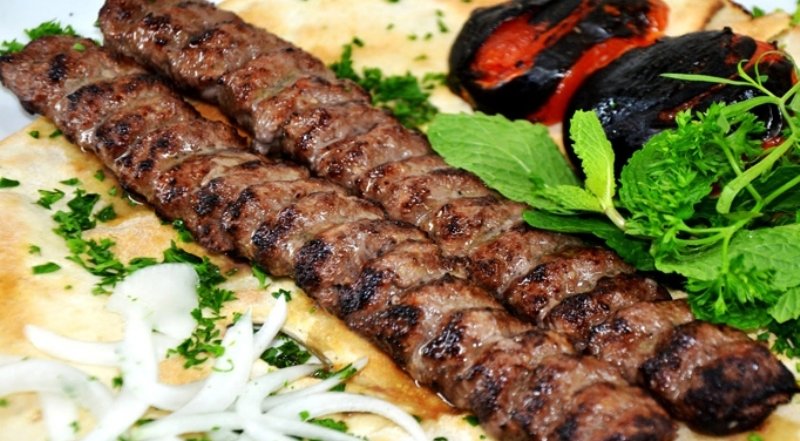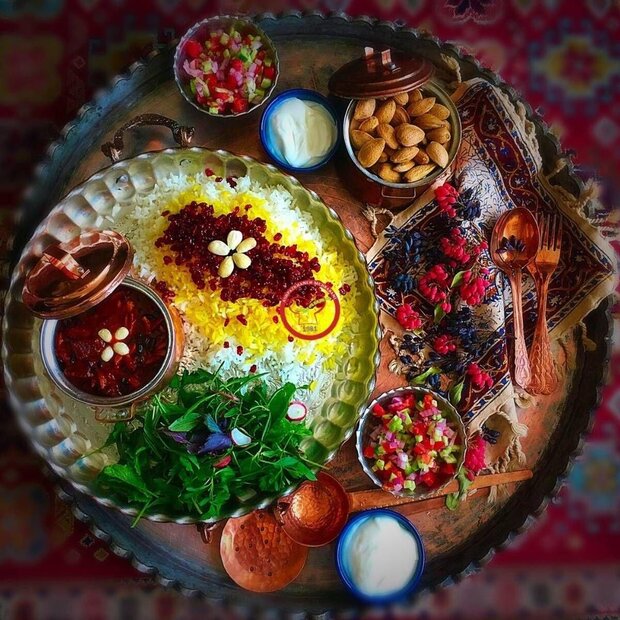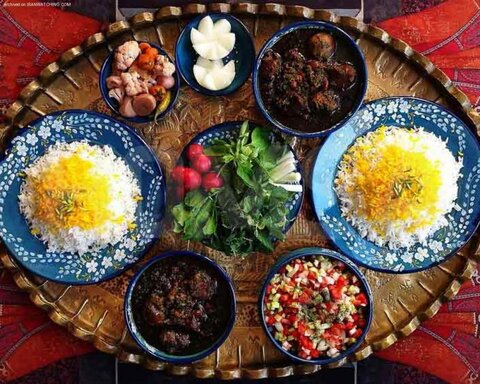Iran (IMNA) - When it comes to Iran, food is also a delightful vehicle for discovering the ancient land that has long been situated at the crossroads of history.
A paradise for foodie travelers, Iran is where it’s not just food on the menu. Some believe the Iranian cuisine is itself a metaphor for the country: It’s savory, sweet, fragrant, and incredibly complex.
Iranian cuisine delicately combines characteristics and peculiarities of the Near and West Asia, India, and East Asia due to Iran’s checkered antiquity and the country's location as a hub of trade between East and West on the historic Silk Roads. Similarly, the Persians have influenced many cuisines as part of their once policy of expansion.
It should be noted that it is not a blind mix of different culinary traditions. For example, the seasoning is much milder than in India, or, Persian rice is fluffy and fragrant and not as sticky as in East Asia.
There are many secrets to know about the Persian kitchen. An example of those very special characteristics is the medicinal aspects of Persian cuisine.

Next time that you hear from an Iranian that some kind of food is Cold (Sard) or Warm (Garm) remember that they may be speaking about something other than the temperature of the food but with its influence on the body and soul - very comparable to some aspects of Chinese cuisine.
Rooted in traditional Persian medicine, these beliefs are still very popular even in educated Iranian families. The ancient theory states that only a balanced diet with proportions of both types of food keeps people physically and mentally healthy.
For instance, some types of food such as lamb meat, onion, wheat, dates, nuts, and grapes are Warm and others such as beef, yogurt, cheese, cucumber, fish, beans, and rice are Cold.
With its fabulous vibrant regional dishes featuring in stews, rice dishes, kebabs, beverages, and desserts, Persian cuisine has always been and still is, rich in fresh herbs such as basil, parsley, chives, cress, and mint. In Iran, herbs are usually measured by the kilogram rather than the bunch!
Apart from that, a supporting role is played by magic spices like saffron and fruits such as plums, pomegranates, quinces, and raisins.

On the whole, rice and bread constitute the main side dishes of the cuisine, which are served with various stews with and without meat or with grilled meat on a skewer (Kababs).
The famed Kabab-e Kubideh is a typical Iranian dish with grilled ground meat made from lamb or beef or a combination of these, but always with grated onions and spices.
Another traditional Iranian dish is Sabzi Polo ba Mahi, which means spiced rice with fish. Sabzi stands for herbs, Polo for rice, and Mahi for fish. Traditional herbs used in its rice include garlic chives, coriander, parsley, and dill.
The widely praised Zereshk Polo ba Morgh is made with Zereshk (barberries), Morgh (chicken), and rice. It is one of the mixed rice dishes served at both small casual gatherings and larger dinner parties, weddings, and even at the most festive celebrations and holidays.
The hugely popular Khoresht is the umbrella term for Persian stew dishes with Fesenjan, an original Iranian Khoresht, being one of the most famous.
Also, a classic among the side dishes is Tahdig which lures people with its crispy golden bottom and fluffy interior. It is usually prepared by sautéing it with oil or butter to create a crispy layer of rice at the bottom of the pot.
Finally, don’t forget to try Ash-Reshteh, the thick noodle soup with beans and herbs that is intensely aromatic, astonishingly delicious, nutrient rich and a wholesome meal by itself. Served during various festivities leading up to Noruz, the Persian New Year, the dish is defined by two uniquely ingredients: Reshteh and Kashk.
Those cited here are just a few picks of hugely popular dishes that can be found on the streets of major cities or little towns as well as in the country’s finest restaurants. Bear in mind that many restaurants mostly skip labor-intensive dishes. Instead, they tend to focus on kebabs and rice. For a foreign traveler, the best chance to taste a frank dish may be to score an invitation to the home of an Iranian friend.


Your Comment